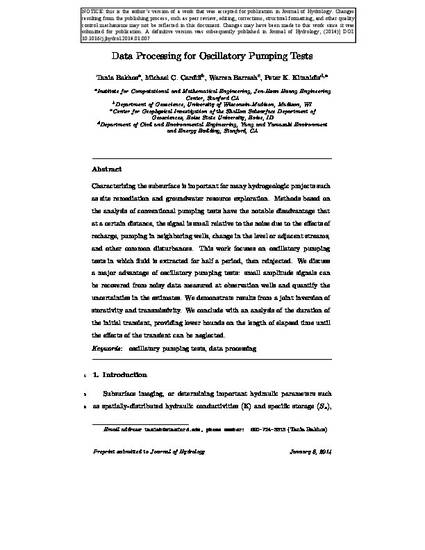
Characterizing the subsurface is important for many hydrogeologic projects such as site remediation and groundwater resource exploration. Methods based on the analysis of conventional pumping tests have the notable disadvantage that at a certain distance, the signal is small relative to the noise due to the effects of recharge, pumping in neighboring wells, change in the level or adjacent streams, and other common disturbances. This work focuses on oscillatory pumping tests in which fluid is extracted for half a period, then reinjected. We discuss a major advantage of oscillatory pumping tests: small amplitude signals can be recovered from noisy data measured at observation wells and quantify the uncertainties in the estimates. We demonstrate results from a joint inversion of storativity and transmissivity. We conclude with an analysis of the duration of the initial transient, providing lower bounds on the length of elapsed time until the effects of the transient can be neglected.
